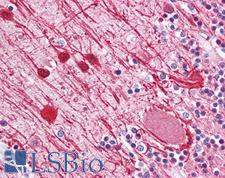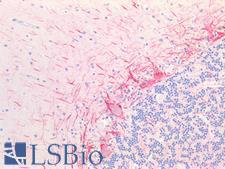Login
Registration enables users to use special features of this website, such as past
order histories, retained contact details for faster checkout, review submissions, and special promotions.
order histories, retained contact details for faster checkout, review submissions, and special promotions.
Forgot password?
Registration enables users to use special features of this website, such as past
order histories, retained contact details for faster checkout, review submissions, and special promotions.
order histories, retained contact details for faster checkout, review submissions, and special promotions.
Quick Order
Products
Antibodies
ELISA and Assay Kits
Research Areas
Infectious Disease
Resources
Purchasing
Reference Material
Contact Us
Location
Corporate Headquarters
Vector Laboratories, Inc.
6737 Mowry Ave
Newark, CA 94560
United States
Telephone Numbers
Customer Service: (800) 227-6666 / (650) 697-3600
Contact Us
Additional Contact Details
Login
Registration enables users to use special features of this website, such as past
order histories, retained contact details for faster checkout, review submissions, and special promotions.
order histories, retained contact details for faster checkout, review submissions, and special promotions.
Forgot password?
Registration enables users to use special features of this website, such as past
order histories, retained contact details for faster checkout, review submissions, and special promotions.
order histories, retained contact details for faster checkout, review submissions, and special promotions.
Quick Order
PathPlusTM NF-L / NEFL Antibodies
NEFL refers to the neurofilament light polypeptide, a low molecular weight neurofilament protein. Neurofilaments are intermediate filaments that form the neuronal cytoskeleton together with microtubules. They act as structural space-fillers for axons and are also involved in axonal transport. Antibodies that detect NEFL are regularly used to identify neurons and distinguish them from glia (neurofilament-negative) and for diagnosis in neuropathology. Because neurofilaments are released into the blood and cerebrospinal fluid when axons and neurons deteriorate, antibodies can also be used to observe the progression and state of neurodegenerative diseases such as multiple sclerosis and Huntington’s disease. NEFL is also specifically implicated in Charcot-Marie-Tooth disease, described by a mutation-induced knockout of the gene that results in childhood-onset neuropathy. In immunohistochemistry, NEFL antibodies are positive in axons of neuronal cells in the central nervous system and in peripheral nerves.
References: European Journal of Neurology. 2010 Mar. 17 (3): 377–8, PMID: 19845747; Neurology. 2009 Apr. 72 (15): 1322–9, PMID: 19365053; PLOS One. 2017 Feb. 12 (2): e0172762, PMID: 28241046; Garland Science. ISBN: 978-0-8153-3218-3; Neurology Genetics. 2018 June; 4 (3), DOI: 10.1212/NXG.0000000000000244; Brain. 2003 Mar. Volume 126, Issue 3; 590–597, DOI: 10.1093/brain/awg059
3 PathPlusTM Antibodies



☰ Filters
Products
Antibodies
(3)
Type
Primary
(3)
Target
NF-L / NEFL
(3)
Reactivity
Human
(3)
Opossum
(1)
Application
IHC
(1)
IHC-Fr
(1)
IHC-P
(3)
WB
(2)
ELISA
(1)
IF
(1)
Host
rabbit
(2)
mouse
(1)
Product Group
PathPlus Cancer
(3)
Isotype
IgG
(2)
IgG1
(1)
Clonality
monoclonal mc
(1)
polyclonal pc
(1)
recombinant monoclonal rmc
(1)
Clone
2F11
(1)
NEFL/2983R
(1)
Format
Unconjugated
(3)
Publications
No
(3)

Cancer
NF-L / NEFL Mouse anti-Human Monoclonal (2F11) Antibody
Opossum, Human
IHC, IHC-Fr, IHC-P, WB
Unconjugated
0.1 mg/$485

Cancer
NF-L / NEFL Rabbit anti-Human Polyclonal Antibody
Human
ELISA, IF, IHC-P, WB
Unconjugated
50 µg/$460

Cancer
NF-L / NEFL Rabbit anti-Human Recombinant Monoclonal (NEFL/2983R) Antibody
Human
IHC-P
Unconjugated
100 µg/$525
Viewing 1-3
of 3
product results










